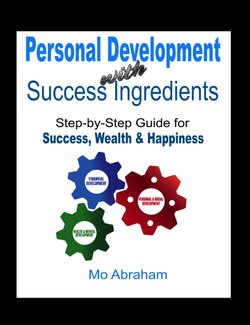Читать книгу Personal Development With Success Ingredients - Mo Abraham - Страница 65
Three: The Twelve Postures
Оглавление1.Pranamasana (Salutation or Prayer Posture)
Stand erect with feet together. Expand your chest and relax your shoulders.
Join the palms together in front of the chest in a Namaskar Mudra. Focus on standing straight, steady and in a meditative mood. This pose helps to induce a state of self-absorption, relaxation and calmness. It activates the Anahata Chakra. Exhale fully.
As you breathe in, lift both your arms up from the sides and as you exhale, bring your palms together in front of the chest in a prayer position. Breathing should be slow and steady breathing.
2.Hastauttanasana (Raised Arm Posture)
Inhaling, stretch both arms above the head keeping the biceps close to the ears, palms facing upward. Arch the back and stretch the whole body. This pose stretches the chest and the abdomen and lifts the Prana (energy) upward to the upper parts of the body propelled by inhalation. The effort is to stretch the whole body up from the heels to the tips of the fingers. Start breathing in as you stretch both arms, and hold your breath (Kumbhaka) in the stretched arm position.
3.Padahastasana (Hand to Foot Posture)
Exhaling, bend the body forward from the waist and down, keeping the spine erect. Avoid collapsing the chest or ‘over-rounding’ the upper back. Keep the legs straight and perpendicular to the ground. This pose massages the abdominal organs, especially the liver, kidneys, pancreas, adrenals, uterus and ovaries. The power of digestion increases and female disorders such as prolapse and menstrual irregularities are relieved. A healthy flow of blood is sent to the spinal nerves as they are stretched and toned. The hamstring muscles at the back of the thigh and calf muscles are stretched and toned. Inversion increases blood flow to the brain. The Prana is channeled to the lower regions of the body propelled by exhalation. As you exhale completely, bring the hands down to the floor, beside the feet.
You may bend your knees if needed to bring the palms down to the floor, but try gently to straighten them. It's a good idea to keep the hands fixed in this position and not move them until you finish the sequence.
4.Ashwa Sanchalanasana (Equestrian Posture)
Inhaling, extend the left leg back as far back as possible and drop the knee to the ground. Bend the right knee and keep it between the palms and the right foot placed flat on the ground. Lift the spine and open the chest. Focus on the eyebrow center.
Breathing: Start inhaling (Purak) and fill your lungs as you reach the position.
5.Parvatasana (Mountain Posture) aka Dandasana (Stick Pose)
Exhaling, bring the right leg back to join with the left leg. Simultaneously raise the buttocks and lower the head between the arms, so that the body forms a triangle with the floor. Try to place the heels flat on the ground. Focus awareness at the neck area. This posture strengthens the nerves and muscles in the arms and legs, stretches the calf muscles and Achilles' tendons and makes the spine straight and stretched. It relieves varicose veins and tones spinal nerves. Maintaining the pose take a deep inhalation.
Breathing: Start exhaling (Rechak) and fully exhale as you reach the pose.
6.Ashtanga Namaskara (Salutation with Eight Limbs)
Exhaling, gently drop both knees to the ground, take the hips back slightly, and slowly slide your body down at an angle as you bring the chest and chin to the ground. All eight limbs – toes, knees, chest, hands and chin – touch the floor. The buttocks are kept up. Hold your breath. This pose develops the chest and strengthens arms. It sends additional blood to this area helping to rejuvenate the nerves.
Breathing: Keep the breath out in the exhaled position (Bahya Kumbhak) as you reach the pose and start inhaling (Purak) as you move to the next pose.
7.Bhujangasana (Cobra Posture)
Inhalation, lower the hips while pushing the chest forward and upward with the hands, until the spine is fully arched and the head is facing up. The knees and lower abdomen remain above the floor. Focus the awareness on the base of spine and feel the tension from the forward pull. This pose gives dynamic expansion to the organs of the chest and abdomen, relieving many ailments such as asthma, constipation, indigestion, kidney and liver problems. It’s very helpful in relieving tension in the back muscles and spinal nerves.
As you inhale, try to push the chest forward; as you exhale, try to push the bellybutton down. Tuck the toes under. Ensure you're stretching just as much as you can; do not force your body.
Breathing: Start inhaling. Fill lungs and hold breath (Purak and Anthar Kumbhak) as you stay in this pose.
8.Parvatasana (Mountain Pose)
Exhale and get back to posture 5.
9.Ashwa Sanchalanasana (Equestrian Pose)
Inhale and swing the right leg forward between the hands. The left leg remains back. Resume posture 4.
10.Padahastasana (Hand to Foot Pose)
Exhaling, bring the left foot forward. Join both legs and resume pose 3.
11.Hastauttanasana (Raised Arm Pose)
Inhale, raise the trunk up and bend backward. Resume pose 2.
12.Pranamasana (Salutation Pose) [aka Tadasana]
Exhale, straighten the body and bring the arms down in front of the chest. Relax in this pose; observe the sensations in your body. Resume pose 1.
Breathing: Start exhaling as you bring the arms forward. Keep breathing normal in this position.
